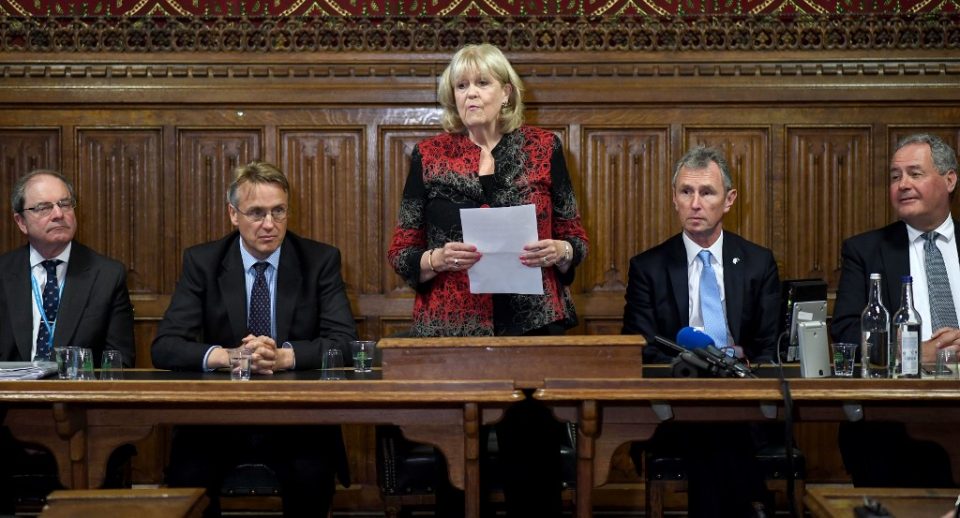
by Robin MILLARD
LONDON, United Kingdom (AFP) — The election of a new British Conservative Party leader is a contest traditionally marked by twists, turns and political backstabbing.
The nominations open and close on Monday and the new leader of the center-right governing party will almost certainly take over from Theresa May as Britain’s prime minister.
Here is a guide as to what to expect in the coming weeks, where the premiership is a separate appointment and the front-runner typically falls flat on their face:
The leadership contest
Conservative MPs nominate candidates from within their own ranks, a list that is then whittled down via a series of ballots until only two are left, with grassroots party members choosing between them.
That, at least, is the plan, but it usually proves to be much more of a roller-coaster ride.
Some of the candidates will run not in the hope of winning but, once eliminated, of delivering their block of supporters to another candidate in return for a plum cabinet post.
Others could gain support in a tactical bid to block another candidate from making it to the final round.
Historically, there is nothing so brutal as a Tory leadership contest, where rivals regularly dish dirt on each other and leak — anonymously of course — salacious details to the press.
The centrist and right-wings of the party, as well as hard or soft Brexit factions, will all be looking to seize power.
In the past, the Conservatives’ winning formula has tended towards pragmatism, rather than purist idealism.
This time, MPs and party members will have to choose candidates who best represent their own views, can finally unpick the Brexit knot and win a general election.
The first ballot is on Thursday and the party hopes to be down to two candidates by June 20, with the final say by party members scheduled for the week beginning July 22.
Becoming prime minister
The Conservative Party’s new leader will not automatically become prime minister, which is a separate appointment.
May — who formally stepped down as party leader last Friday — was chief for two days before her predecessor David Cameron resigned as prime minister in 2016.
And the transition this time may similarly take a few days.
May was appointed as the head of Her Majesty’s Government by Queen Elizabeth II and remains prime minister until she informs the head of state of her resignation from the post.
The sovereign will then appoint a successor.
The post of prime minister goes to the person most likely to command the confidence of parliament’s elected lower House of Commons.
That is typically the leader of the largest party — in this case, the Conservatives who won the most seats in the last general election in 2017.
The monarch will send for the new Conservative leader and invite them to form a government.
Warning from history
But whoever emerges as the early front-runner should heed a warning from past Tory leadership elections — the favorite never wins.
The first such contest was held in 1965.
Before that, the leader simply “emerged” from talks among party bigwigs.
In 1965, Reginald Maudling was considered the favorite but Edward Heath won the contest.
Heath called a leadership election in 1975 to assert his authority and was expected to win easily.
Margaret Thatcher stood and seized the crown. Heath never forgave her.
After Thatcher was forced out in 1990 when she failed to beat challenger Michael Heseltine by a big enough margin to carry on, John Major entered the race and beat Heseltine.
When Major stepped down in 1997, heavyweight Kenneth Clarke was the clear favorite and topped the first two ballots.
But in the final round, the relatively unknown William Hague won, aged 36.
When Hague quit in 2001, Michael Portillo led the first two rounds.
But he was eliminated in the final three, Clarke topping the votes with Iain Duncan Smith coming second.
The lesser-known Duncan Smith then won the party membership vote — a new mechanism introduced by Hague.
In 2005, David Davis was the runaway favorite before modernizer and youthful outsider Cameron gained unstoppable momentum.
And in the 2016 contest that saw May emerge victoriously, Boris Johnson was the favorite before being politically knifed in the back by his chief ally Michael Gove, forcing him to pull out before voting even began.
© Agence France-Presse
